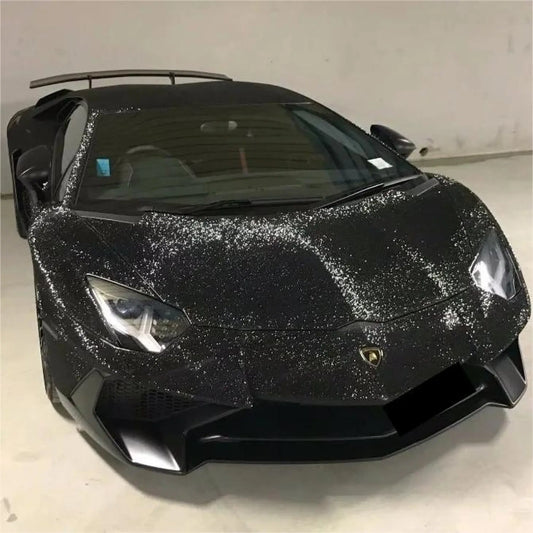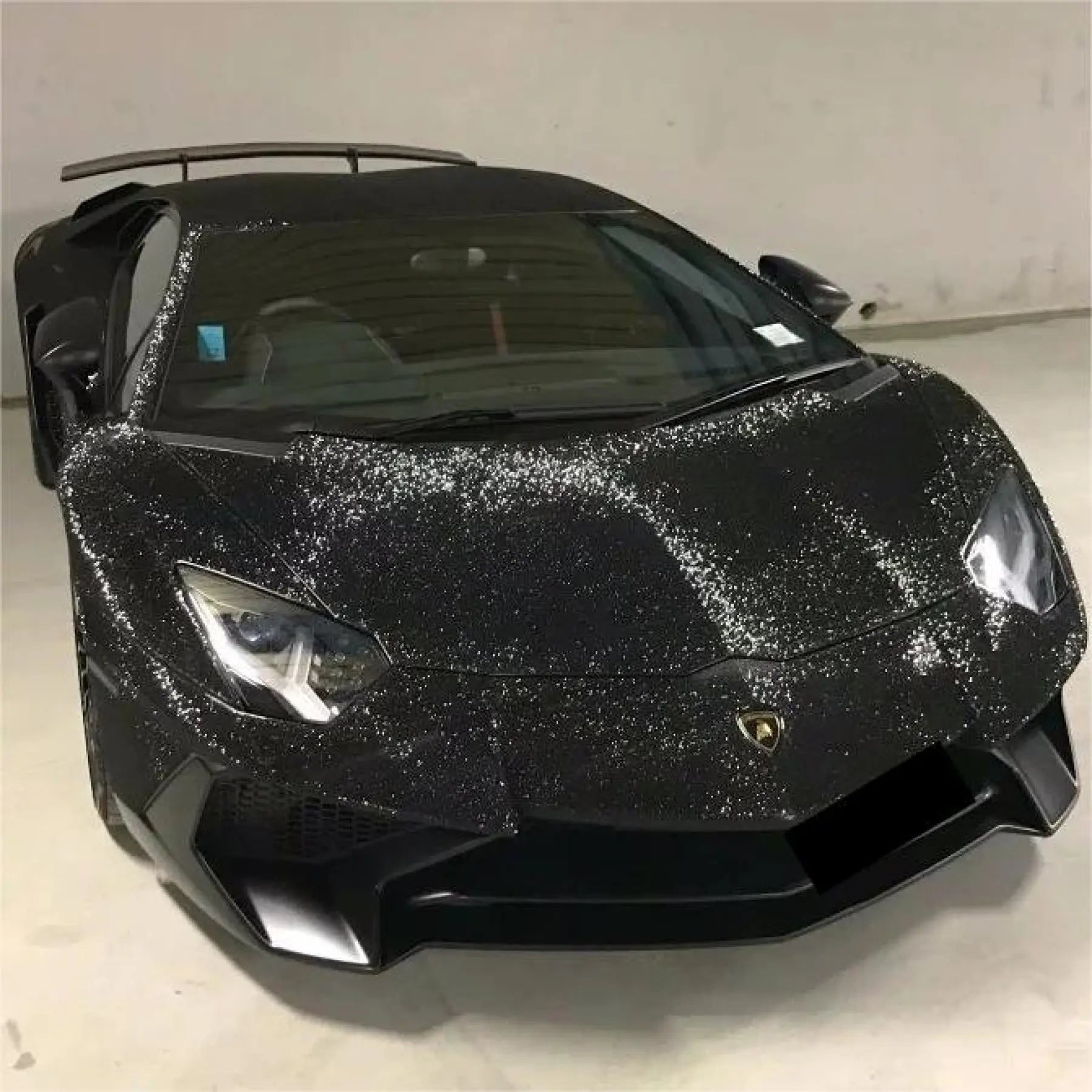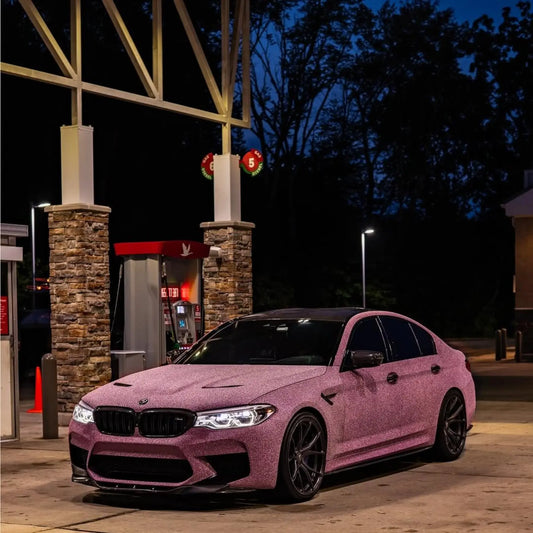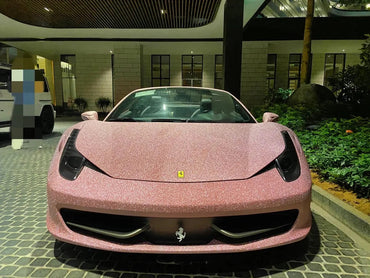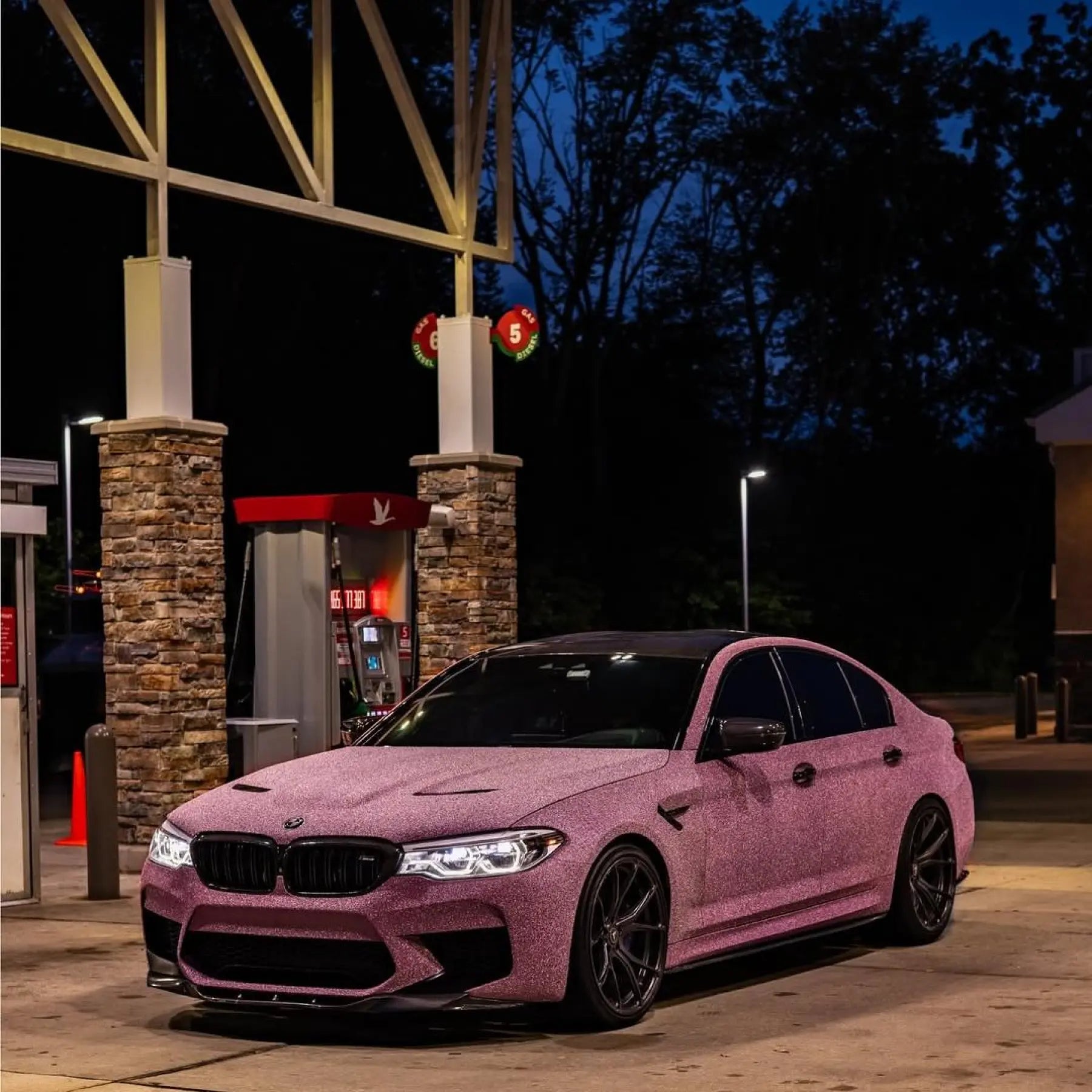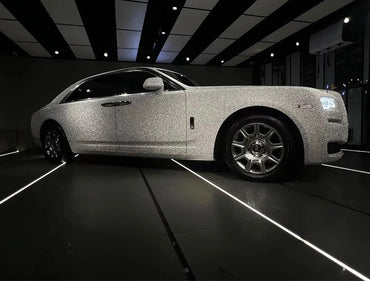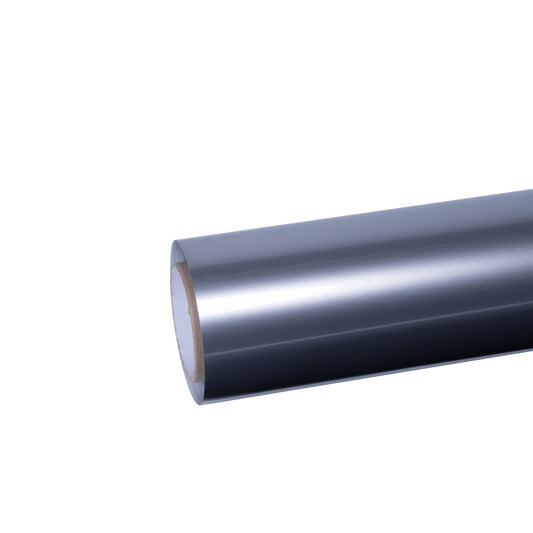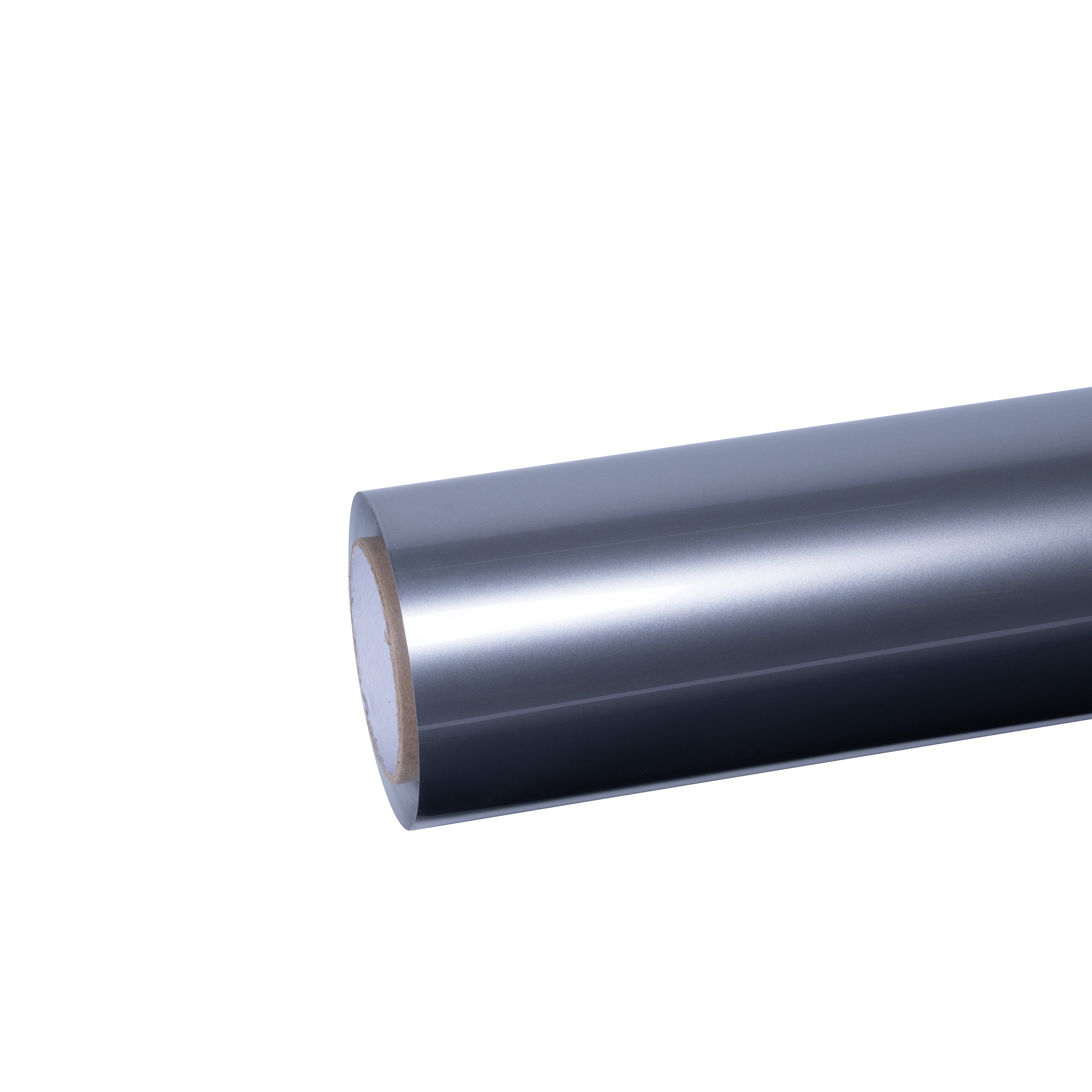Each season brings unique environmental challenges that can affect your vinyl wrap's appearance and durability. From scorching summer UV rays to harsh winter road salt, understanding how to protect your wrap throughout the year ensures you get the most value from your investment. This comprehensive seasonal care checklist will guide you through year-round maintenance strategies specifically designed for all types of vehicle wraps.
Why Seasonal Car Wrap Maintenance Matters
Vehicle wraps are engineered to withstand various weather conditions, but they're not invincible. Seasonal elements like extreme temperatures, moisture, UV radiation, and road debris can gradually degrade even the highest-quality vinyl if left unprotected. Regular seasonal maintenance offers several critical benefits:
Protection Against Environmental Damage: Proactive care prevents fading, peeling, cracking, and discoloration caused by seasonal weather patterns.
Extended Wrap Lifespan: Properly maintained wraps can last five to ten years, compared to just three to five years with neglect. Quality materials like our ultra matte wrap collection deserve quality care.
Cost Savings: Preventative maintenance costs far less than premature wrap replacement or expensive repairs.
Preserved Vehicle Value: Well-maintained wraps protect your original paint, helping preserve or even increase resale value by ten to fifteen percent.
Professional Appearance: Whether you have commercial fleet graphics or personal customization, a clean, vibrant wrap maintains your professional image and style statement.
Spring Car Wrap Care: Refresh and Revitalize
Spring marks the perfect time to refresh your wrap after winter's harsh conditions. This transitional season brings increased pollen, tree sap, and fluctuating temperatures that require specific attention.
Spring Cleaning Deep Clean Protocol
Begin with a thorough inspection and deep cleaning routine to remove winter buildup and prepare your wrap for warmer months.
Complete Wash Procedure: Hand wash your wrapped vehicle using pH-balanced car wash soap specifically formulated for vinyl surfaces. Use soft microfiber cloths or sponges, working from top to bottom in overlapping sections. Never use abrasive materials, stiff brushes, or harsh chemicals that can scratch or damage the vinyl surface.
Pollen and Sap Removal: Spring pollen can be particularly stubborn and potentially staining if left too long. Rinse frequently with cool water, and for stubborn tree sap or sticky residue, apply a vinyl-safe citrus cleaner or use a mixture of isopropyl alcohol and water in a two-to-one ratio. Test any new cleaning solution on an inconspicuous area first.
Edge Inspection: Winter conditions can sometimes cause edge lifting or peeling. Carefully inspect all edges, seams, and high-wear areas like door handles, mirrors, and bumpers. Address any minor lifting promptly with vinyl-safe adhesive or consult a professional for repairs.
Salt Residue Elimination: Even as spring arrives, road salt residue from winter can remain trapped in crevices. Pay special attention to lower panels, wheel wells, and undercarriage edges where salt accumulation is common.
Spring Protection Strategies
UV Protection Application: Spring brings increasing sun exposure. Apply a vinyl-safe protective spray wax or sealant that doesn't contain petroleum distillates or abrasive compounds. This creates a protective barrier against UV rays and environmental pollutants.
Drainage Check: Ensure water drains properly from all wrap surfaces. Standing water in crevices can lead to mildew growth and adhesive weakening, especially during spring's rainy periods.
Parking Considerations: While shade is important, avoid parking under flowering trees during spring. Tree sap, bird droppings, and falling blossoms can damage wrap surfaces if not removed promptly.
Summer Car Wrap Maintenance: Beat the Heat
Summer presents the most intense UV exposure and heat-related challenges for vehicle wraps. High temperatures can accelerate fading, cause shrinkage, and weaken adhesive bonds if proper precautions aren't taken.
Heat Protection Essentials
Strategic Parking: Whenever possible, park in covered areas, garages, or shaded spots. Prolonged direct sunlight exposure at high temperatures can cause premature fading and material degradation. If shade isn't available, consider using a breathable, high-quality car cover designed for wrapped vehicles.
Temperature Management: Avoid washing your wrap immediately after sun exposure. The sudden temperature change from applying cold water to hot vinyl can cause warping or stress on the material. Wait until early morning or late evening when surfaces have cooled naturally.
Regular Cool Water Rinses: During hot summer months, rinse your vehicle with cool water every few days to remove dust, pollen, and pollutants that can bake onto the surface in high heat. This simple step prevents buildup that becomes harder to remove over time.
Summer Cleaning Best Practices
Increased Washing Frequency: Wash your wrapped vehicle at least once weekly during summer, or up to two to three times weekly if exposed to heavy dust, road debris, or coastal salt air. Our metallic vinyl wrap and crystal vinyl wrap collections maintain their stunning appearance with consistent care.
Spot Cleaning Protocol: Address bird droppings, insect splatter, and fuel spills immediately. These contaminants contain acids that can permanently damage vinyl if left for extended periods, especially in summer heat. Soak affected areas with warm, soapy water for several minutes before gently wiping clean.
Gentle Hand Washing: Automatic car washes with rotating brushes should be avoided entirely. If you must use automated systems, choose touchless or soft-cloth options. Hand washing remains the gold standard for wrap preservation.
Proper Drying Technique: After washing, minimize water spotting by using a silicone squeegee or soft chamois to remove excess water, then complete the drying process with clean microfiber cloths.
Summer Inspection Checklist
Conduct weekly visual inspections during summer months, checking for early warning signs of heat damage, color fading, or edge lifting. High temperatures make vinyl more pliable, which can sometimes lead to minor shifting. Catching issues early prevents major problems later.
Fall Car Wrap Care: Prepare for Winter
Autumn's transitional nature brings unique challenges including falling leaves, increased rainfall, temperature fluctuations, and early frost. This season is crucial for preparing your wrap to withstand harsh winter conditions ahead.
Fall Maintenance Priorities
Leaf and Debris Management: Wet leaves contain tannins and acids that can stain vinyl wraps if left in contact for extended periods. Remove fallen leaves promptly, especially from horizontal surfaces like hoods, roofs, and trunk lids. Check hidden areas where leaves accumulate, such as windshield bases and cowl areas.
Pre-Winter Deep Clean: Give your vehicle a thorough cleaning and inspection before winter weather arrives. This is your opportunity to address any existing issues before cold temperatures make repairs more difficult.
Seal and Protect: Apply a fresh coat of vinyl-safe protective sealant in fall. This creates a barrier against moisture, road grime, and the road treatments coming in winter months.
Edge Reinforcement Check: Temperature fluctuations common in fall can affect wrap adhesion. Inspect all edges carefully and have any loose areas professionally resealed before winter freeze-thaw cycles exacerbate the problem.
Fall Protection Strategies
Moisture Management: Increased rainfall in autumn requires attention to proper drying. Never allow your wrapped vehicle to remain wet for extended periods. Moisture trapped between vinyl and paint can lead to mildew growth and adhesive failure.
Garage Storage Preparation: If you plan to store a wrapped vehicle through winter or use it less frequently, ensure proper indoor storage conditions. Avoid covering a damp wrap, as this traps moisture. The wrap must be completely dry before applying any protective covering.
Weather Monitoring: As temperatures begin dropping, be mindful of vinyl's changing characteristics. Cold vinyl becomes less flexible, making it more susceptible to cracking or damage from impacts.
Winter Car Wrap Protection: Combat the Cold
Winter poses perhaps the most significant challenges for vinyl wraps. Freezing temperatures, road salt, ice, snow, and the repeated freeze-thaw cycles can all take their toll on even the highest-quality materials.
Winter Washing and Cleaning
Increased Wash Frequency: During winter, wash your vehicle at least once weekly to prevent road salt accumulation. Salt is highly corrosive and can cause significant damage if allowed to build up, particularly on lower panels and around wheel wells.
Specialized Winter Cleaning: Use lukewarm water rather than hot or cold extremes. Never pour hot water directly onto frozen vinyl to melt ice, as the rapid temperature change can cause material stress, cracking, or delamination.
Salt Removal Protocol: After driving on salted roads, rinse your vehicle as soon as practical, focusing on lower body panels, wheel wells, and undercarriage edges where salt concentrates. Our colored paint protection film provides excellent salt resistance, but regular cleaning remains essential.
Avoid Harsh Chemicals: Many commercial de-icing products and harsh winter cleaning solutions contain chemicals that can damage vinyl. Stick with pH-balanced, vinyl-safe cleaners designed specifically for wrapped vehicles.
Snow and Ice Removal Best Practices
Gentle Snow Removal: Never use metal ice scrapers, snow shovels, or stiff-bristled brushes on wrapped surfaces. These tools can scratch, tear, or puncture vinyl. Instead, use soft-bristled brushes, foam snow brushes, or clean microfiber cloths.
Warming Strategy: Start your vehicle and allow it to warm naturally, using the heating system to melt ice from the inside out. For wrapped windows, always use the defroster rather than scraping.
Soft Touch Approach: When removing snow, use gentle brushing motions rather than aggressive scraping. The goal is removal, not perfection. Small amounts of frost or ice can be allowed to melt naturally as the vehicle warms.
Winter Storage and Protection
Indoor Parking: Whenever possible, park your wrapped vehicle indoors or under a carport. This dramatically reduces exposure to snow, ice, freezing temperatures, and road salt carried by wind.
Breathable Covers: If indoor parking isn't available and you're using a car cover, ensure it's breathable to prevent moisture buildup. Trapped moisture in freezing conditions can lead to ice formation between the wrap and cover, potentially damaging the vinyl.
Regular Inspections: Check for damage more frequently in winter. Cold temperatures make vinyl brittle, increasing susceptibility to cracking from minor impacts or stress points. Early detection allows for timely repairs before small issues become major problems.
Winter Car Wash Considerations
Avoid Automated Brushes: Automated car washes are always risky for wraps, but they're particularly problematic in winter when wraps are already stressed from cold temperatures. Harsh chemicals and abrasive brushes can cause immediate damage to cold, brittle vinyl.
Hand Wash Preferred: Opt for professional hand wash services that understand wrapped vehicle care, or wash at home using proper techniques and vinyl-safe products.
Touchless Alternatives: If automated washing is necessary, choose touchless systems that rely on water pressure and cleaning agents rather than physical contact. However, these should still be used sparingly and are not recommended as regular maintenance solutions.
Year-Round Car Wrap Maintenance Best Practices
Beyond seasonal care, certain maintenance practices should be performed consistently throughout the year to ensure maximum wrap longevity and appearance.
Weekly Maintenance Routine
Visual Inspection: Conduct a walk-around inspection weekly, looking for scratches, bubbling, peeling edges, or areas of discoloration. Early detection prevents minor issues from becoming expensive repairs.
Spot Cleaning: Address contaminants like bird droppings, insect residue, fuel spills, or tree sap immediately upon discovery. These acidic substances cause progressive damage the longer they remain in contact with vinyl.
Quick Rinse: A weekly rinse with clean water removes light dust and prevents buildup of environmental pollutants, particularly beneficial for vehicles parked outdoors.
Monthly Maintenance Tasks
Comprehensive Wash: Perform a thorough hand wash monthly at minimum, or more frequently based on environmental exposure and usage patterns. This includes cleaning all visible vinyl surfaces, door jambs, and high-wear areas.
Edge Attention: Pay special attention to wrap edges, seams, and transition areas monthly. These vulnerable points require extra care to prevent lifting and delamination.
Protective Treatment: Depending on your local climate and the specific wrap material, apply protective treatments monthly or quarterly. Products like vinyl-safe spray wax help repel water, resist UV damage, and make cleaning easier.
Quarterly Maintenance Schedule
Professional Inspection: Consider having your wrap professionally inspected every three to four months, particularly if you notice any concerns. Professionals can identify developing issues that may not be obvious to untrained eyes.
Deep Clean and Detail: Schedule a professional detailing service quarterly for comprehensive cleaning that reaches areas difficult to access during regular washing.
Documentation: Photograph your wrap quarterly from multiple angles. This creates a visual record of its condition over time and helps identify gradual changes that might otherwise go unnoticed.
Annual Maintenance Considerations
Comprehensive Assessment: Once yearly, conduct or schedule a complete wrap assessment. This should include examination of all edges, evaluation of overall condition, assessment of color retention, and identification of any areas requiring repair or attention.
Professional Maintenance: Consider annual professional maintenance that may include deep cleaning, reapplication of protective coatings, edge resealing, and repair of minor damage.
Product Review: Annually review your cleaning products and techniques. As new vinyl-safe products become available, consider whether updates to your maintenance routine might improve results.
Specific Care for Different Wrap Types
Different wrap materials require slightly different care approaches. Understanding the unique properties of your specific wrap type helps optimize maintenance effectiveness.
TPU Paint Protection Film Care
Our premium TPU paint protection wrap features self-healing properties that set it apart from traditional vinyl. These films can repair minor scratches when exposed to heat from sunlight or warm water.
Heat Activation: Minor scratches and swirl marks often disappear when exposed to heat. Park in direct sunlight or apply warm water to activate self-healing properties.
Gentle Cleaning: Despite superior durability, TPU still benefits from gentle cleaning methods. The self-healing topcoat can be compromised by harsh chemicals or abrasive materials.
Extended Lifespan: With proper care, TPU paint protection film lasts five to ten years, significantly longer than traditional vinyl wraps which typically last three to five years.
Specialty Finish Maintenance
Matte and Satin Wraps: Our ultra matte wrap collection requires special attention. Never use wax or shine-enhancing products on matte finishes, as these create unwanted gloss spots. Use only matte-specific cleaners and avoid circular buffing motions that can create shiny areas.
Metallic and Chrome Wraps: Products like our liquid chrome wrap and metallic vinyl wrap show fingerprints and water spots more readily than other finishes. More frequent cleaning and immediate drying after washing maintain their reflective beauty.
Color-Changing Wraps: The stunning dual color dream vinyl wrap and rainbow laser vinyl wrap feature complex optical properties. Avoid abrasive cleaning that can dull the color-shifting effect, and use UV protective treatments to maintain vibrant color transitions.
Carbon Fiber Texture: Our 3D carbon fiber wrap features textured surfaces that can trap dirt in their patterns. Use soft brushes during washing to gently clean textured areas without damaging the three-dimensional effect.
Color-Specific Considerations
Dark Colors: Black, dark blue, and deep purple wraps from our extensive color collections show water spots, dust, and scratches more readily than lighter colors. More frequent washing maintains their deep, rich appearance.
Light Colors: White, silver, and light-colored wraps may show dirt and road grime more quickly but typically hide minor scratches better than dark colors. Regular washing prevents staining from environmental contaminants.
Vibrant Colors: Bright colors like our red wraps, orange wraps, and yellow wraps may show fading from UV exposure more noticeably. UV protective treatments are especially important for maintaining color vibrancy.
Professional vs DIY Maintenance
Understanding when to handle maintenance yourself and when to seek professional assistance helps protect your investment while managing costs effectively.
DIY Maintenance Capabilities
Regular Washing: Hand washing with appropriate products is well within most owners' capabilities and should be performed regularly.
Visual Inspections: Learning to spot early warning signs of damage empowers you to address issues promptly.
Basic Spot Cleaning: Removing bird droppings, insect residue, and other contaminants is straightforward with proper products and techniques.
Protective Product Application: Applying vinyl-safe spray wax or protective sealants can be done effectively at home with quality products.
When to Seek Professional Help
Edge Repairs: If you notice lifting edges or delamination, professional repair ensures proper adhesion and prevents further damage.
Significant Damage: Tears, punctures, or large scratches typically require professional repair or section replacement.
Deep Cleaning: Professional detailing services have specialized tools and products that achieve results beyond typical home washing.
Installation Issues: If you notice bubbling, significant wrinkles, or adhesion problems that weren't present initially, professional assessment determines whether these issues are covered under warranty.
Annual Maintenance: Consider professional annual maintenance for comprehensive care that extends wrap lifespan.
Common Seasonal Care Mistakes to Avoid
Learning from common errors helps you avoid costly mistakes that can damage your wrap or void warranties.
Critical Mistakes to Prevent
Using Harsh Chemicals: Petroleum-based products, harsh solvents, kitchen degreasers, and standard automotive waxes containing abrasives can permanently damage vinyl. Always use vinyl-specific products.
High-Pressure Washing: Pressure washers above two thousand PSI or held too close to wrap surfaces can lift edges, penetrate seams, and cause delamination. If using pressure washers, maintain at least twelve inches distance, use wide-angle forty-degree nozzles, and keep water temperature below one hundred forty degrees Fahrenheit.
Automated Brush Washes: Rotating brushes in automatic car washes scratch vinyl surfaces, lift edges, and can cause significant damage. The chemicals used in these systems are often too harsh for vinyl materials.
Neglecting Spot Cleaning: Delaying removal of bird droppings, tree sap, or fuel spills allows acidic compounds to etch into vinyl, potentially causing permanent staining or damage.
Inadequate Drying: Allowing wrapped vehicles to air dry creates water spots and can lead to mineral deposits that become difficult to remove. Always hand dry with appropriate materials.
Wrong Cleaning Materials: Abrasive sponges, stiff brushes, paper towels, and old rags can scratch vinyl surfaces. Use only microfiber cloths, soft foam applicators, and gentle washing tools.
Temperature Extremes: Washing with very hot or very cold water, especially when vinyl is at opposing temperature extremes, creates stress that can damage material and adhesive bonds.
Ignoring Manufacturer Guidelines: Different wrap materials have specific care requirements. Ignoring manufacturer recommendations can void warranties and cause preventable damage.
Essential Products for Year-Round Wrap Care
Building a proper maintenance kit ensures you have everything needed for effective seasonal care without using products that might damage your investment.
Cleaning Essentials
pH-Balanced Car Wash Soap: Specifically formulated for vinyl wraps, these products clean effectively without stripping protective coatings or damaging adhesive.
Vinyl-Safe Spot Cleaners: For removing stubborn contaminants like tree sap, tar, or insect residue without harsh chemicals.
Isopropyl Alcohol Solution: A seventy-percent isopropyl alcohol and water mixture serves as an effective cleaning solution for many situations.
Microfiber Towels: Multiple high-quality microfiber towels in various sizes for washing, drying, and buffing.
Application Tools
Soft Foam Applicators: For applying protective treatments evenly without creating streaks or scratches.
Gentle Washing Mitts: Plush microfiber or lamb's wool washing mitts that hold plenty of soapy water while remaining gentle on vinyl.
Soft-Bristle Brushes: For cleaning textured wraps, wheel wells, and tight spaces where cloths can't reach effectively.
Protective Products
Vinyl-Safe Spray Wax: Formulated specifically for vinyl wraps, providing UV protection and water beading without petroleum distillates.
Ceramic Coating Options: Professional-grade ceramic coatings designed for vinyl provide superior protection, though application often requires professional installation.
Edge Sealant: Vinyl-safe adhesive for addressing minor edge lifting before it becomes a major problem.
Seasonal Storage Considerations
If you store a wrapped vehicle seasonally or use it infrequently, proper storage techniques prevent damage during idle periods.
Preparation for Storage
Complete Cleaning: Thoroughly wash and dry the vehicle before storage. Any contaminants left on the wrap during storage can cause permanent staining or damage.
Full Inspection: Address any existing damage, lifting edges, or concerns before storage to prevent deterioration during the idle period.
Protective Treatment: Apply a fresh coat of protective sealant before storage to provide barrier protection during the storage duration.
Storage Environment
Climate Control: Ideal storage maintains consistent temperature and humidity. Extreme temperature fluctuations or high humidity can affect wrap integrity over time.
Darkness: UV exposure continues to fade colors even during storage. Keep stored vehicles in dark or covered environments to prevent unnecessary UV degradation.
Ventilation: Ensure adequate air circulation around stored vehicles to prevent moisture accumulation and mildew growth.
Storage Covering
Breathable Covers: If using a car cover during storage, ensure it's breathable to prevent moisture entrapment while protecting from dust.
Proper Fit: Covers should fit properly without excessive tightness that might stress wrap edges or create pressure points.
Clean Covers: Only use clean covers on wrapped vehicles. Dirty covers can transfer contaminants or cause scratching during any movement.
Maximizing Your Wrap Investment
Your vehicle wrap represents both financial investment and personal expression. Following these seasonal care guidelines ensures you receive maximum value and enjoyment from your wrap throughout its entire lifespan.
Long-Term Value Protection
Resale Considerations: Well-maintained wraps protect original paint, often increasing vehicle resale value by ten to fifteen percent. When it's time to sell, wraps can be professionally removed to reveal pristine paint underneath.
Warranty Compliance: Many wrap warranties require proof of proper maintenance. Keeping records of regular cleaning and care ensures warranty coverage remains valid should issues arise.
Professional Appearance: Whether your wrap serves business purposes or personal expression, consistent maintenance preserves the professional, eye-catching appearance that attracted you to wrapping initially.
Record Keeping
Maintenance Log: Keep a simple log of washing dates, products used, protective treatments applied, and any issues noticed. This documentation helps identify patterns and provides valuable information for warranty claims if needed.
Photo Documentation: Regular photos create a visual history of your wrap's condition, helping you notice gradual changes and providing evidence for insurance or warranty purposes if damage occurs.
Professional Service Records: Retain receipts and records from professional installations, repairs, or maintenance services. These documents support warranty claims and demonstrate proper care history.
Conclusion: Year-Round Protection for Lasting Beauty
Protecting your car wrap investment requires consistent attention throughout the year, but the effort pays dividends in extended lifespan, maintained appearance, and preserved vehicle value. Each season presents unique challenges, from summer's intense UV exposure to winter's road salt assault, but with proper knowledge and regular maintenance, your wrap will continue looking stunning for years to come.
Whether you've chosen our premium TPU paint protection film for maximum durability, vibrant colored paint protection film for style and protection, or eye-catching specialty finishes from our best sellers collection, following this seasonal care checklist ensures your investment remains protected and beautiful.
Remember that prevention is always easier and less expensive than repair. Regular washing, prompt attention to contaminants, appropriate seasonal protections, and proper storage all contribute to wrap longevity. By making seasonal maintenance a consistent part of your vehicle care routine, you protect not just the wrap itself, but also the original paint beneath it and the overall value of your vehicle.
For additional guidance on vehicle wrap care, installation techniques, and product selection, explore our comprehensive guides and wrapping tools collection. Our sample kits allow you to test materials and finishes before committing to a full vehicle wrap, ensuring you choose the perfect option for your needs and climate.
Your wrapped vehicle is a rolling work of art and a substantial investment. Treat it with the care it deserves, and it will reward you with years of stunning appearance and reliable protection.
External Resources
For more detailed information about vehicle wrap care and maintenance:
- Wikipedia: Vehicle Vinyl Wrap - Comprehensive overview of vinyl wrap technology and history
- International Window Film Association - Industry standards and best practices for film applications
- Professional Detailing Resources - In-depth technical information about automotive surface care
-
Choosing the right wrap material for your climate
Professional vs DIY installation comparison


